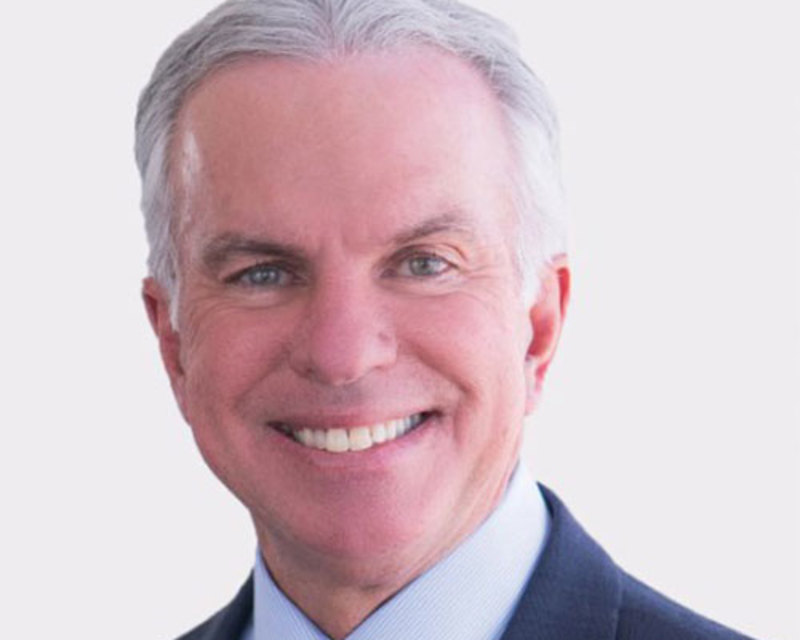

Counting down to a US recession
A US recession is more likely than not, and inflation and higher rates look like they’re here to stay. The silver lining though is that any downturn should bode well for value investing, says Mike Mullaney, Director of Global Markets Research at Boston Partners.
まとめ
- A wide range of indicators mostly point to an impending US recession
- Triggering unemployment to curb excess demand is unpalatable
- Inflation to remain stickier for longer but value set to do well
He says the traditional factors that typically predict a recession are well established, and the US Federal Reserve faces a rock and a hard place when it comes to tackling inflation that is being fueled by a consumer spending boom, essentially requiring unemployment to rise.
The flipside for long-time value investors such as Boston Partners is that recessions are historically good for the value style, which seeks out companies whose true potential is not reflected in their share prices, he says.
“Almost all the traditional indicators are leaning towards a recession, the inverted yield curve in the bond market being the number one factor,” Mullaney says. “The second is M2 money supply which has fallen precipitously on a year-over-year basis and is now in negative territory. Every time we have seen a contraction of M2 to that level, we’ve had a recession.”
“The third factor is the Conference Board leading indicators, a series of ten different underlying indicators that is down 8% on a year-over-year basis annualized over six months. A drop of 4% has been the trigger point in the past for recession, and we’re now at double that level.”

The Conference Board US Leading Economic Indicator. Source: Conference Board
Conditions for the recession were laid down in 2022 when double-digit inflation sparked by years of zero interest rates and quantitative easing ran head on into the food supply and energy crisis that followed Russia’s invasion of Ukraine. This led to dramatic rate hikes by nearly all global central banks that are intended to leave consumers with less money to spend, curtailing price rises as demand slows.
Yet, consumer spending remains robust, and unemployment has not yet tanked, as employers offered generous pay rises to keep hold of their staff. This has led to the situation where the services sector – usually the first to crumble amid high inflation and a recessionary threat – has not yet fissured.
“The consumer is still in great shape, the unemployment rate is 3.4%, wages are still growing – basically at 5%-plus right now – so there's been no pain at the consumer level,” Mullaney says. “And the consumer is upwards of 70% of US GDP. So it looks like it's going to be a much longer period of time before a recession shows up compared to historical standards.”
“In the past, when the Conference Board indicators have gone negative, the lag factor has been anywhere from two to 18 months to when a recession actually starts. The readings first went negative in December 2021. So it should be the summer when we start seeing some significant contraction in US economic growth.”
It’s difficult to combat inflation
High inflation will remain very difficult to tackle using standard policy, Mullaney warns. “I'm an inflation bear,” he says. “Research that uses 52 years’ worth of data for 14 different developed markets has shown how sticky inflation becomes when you breach certain levels of it.”

With a PMI below 50, the manufacturing sector is in contraction, while services are still strong. Source: Bloomberg, S&P Global
“The rule of thumb is that once you've breached 8% – which we did globally – it takes on average 11 years to get back to 3%. So we’re looking at persistently sticky high inflation. Going from 8% to 5% is going to prove much easier than going from 5% to the Fed’s inflation target.”
“I also think that interest rates are going to be higher for longer. We've still got negative real rates, if you use the conventional way of taking the 10-year Treasury bond yield relative to the headline CPI. We can possibly get back to a positive on conventional real rates by the end of the year if inflation does come down.”
最新のインサイトを受け取る
投資に関する最新情報や専門家の分析を盛り込んだニュースレター(英文)を定期的にお届けします。
Unemployment needs to rise
However, solving the inflation conundrum would theoretically involve something politically unpalatable, and that’s raising the unemployment rate. The non-accelerating inflation rate of unemployment (NAIRU) – the level that does not cause inflation to increase – was calculated by the Congressional Budget Office to be 4.3%.
“We're currently at 3.4%, so we're nowhere near that,” Mullaney says. “The rule of thumb for this one is that we're going to have to increase unemployment by at least 0.5 percentage points to at least 3.9% before it starts making a difference. Usually when the unemployment rate has risen by 0.7 percentage points is when the Fed will truly pause.”
“It therefore means that the Fed has to increase the unemployment rate to create the level of demand destruction that reduces inflationary pressures. And we don't think that Fed Chairman Jerome Powell would be able to withstand that kind of level of political pressure if he did that.”
“Headline CPI is going to come down precipitously, but it’s the core rate you have to focus on. That's at 4.6% right now. The Fed won’t get to its 2% target without a recession, plain and simple. ”
Value versus growth investing
Going into a recession would bode well for growth investing, which was the dominant force for 12 years following the great financial crisis. Until the start of 2023, value investing had been in favor since the announcement of the first vaccines in late 2020.

Value versus growth in April (blue lines) and the year to date (green lines): Growth has been winning in 2023. Source: Bloomberg
“Growth investing always does well when there's a dearth of growth,” says Mullaney. “Going into a period where there is a dearth of growth, tech will still do really well, because that's where everyone's perception of growth is.”
“Tech has become the new quality trade. Quality is doing well and growth is doing well right now, and I don't see that changing until a recession begins.”
Two things will happen
“When you come out of recession, two things are going to happen. We're going to have a higher level of real interest rates than we've seen for the last 10 to 12 years, and value does well in elevated levels of real rates. Value also does well with elevated levels of inflation, and I don't think we’ll go back to 2% inflation.”
“As always, you need patience for value investing. Value is not a trading strategy; it is an investment strategy. Value has a longer pay-off window than growth does. Growth generally gives you more volatility, but usually has a shorter pay-off window.”
“Perhaps the best quote is from Warren Buffett, who is a value manager. When asked ‘What is your favorite holding period?’, he replied: ‘Forever!’”
重要事項
当資料は情報提供を目的として、Robeco Institutional Asset Management B.V.が作成した英文資料、もしくはその英文資料をロベコ・ジャパン株式会社が翻訳したものです。資料中の個別の金融商品の売買の勧誘や推奨等を目的とするものではありません。記載された情報は十分信頼できるものであると考えておりますが、その正確性、完全性を保証するものではありません。意見や見通しはあくまで作成日における弊社の判断に基づくものであり、今後予告なしに変更されることがあります。運用状況、市場動向、意見等は、過去の一時点あるいは過去の一定期間についてのものであり、過去の実績は将来の運用成果を保証または示唆するものではありません。また、記載された投資方針・戦略等は全ての投資家の皆様に適合するとは限りません。当資料は法律、税務、会計面での助言の提供を意図するものではありません。 ご契約に際しては、必要に応じ専門家にご相談の上、最終的なご判断はお客様ご自身でなさるようお願い致します。 運用を行う資産の評価額は、組入有価証券等の価格、金融市場の相場や金利等の変動、及び組入有価証券の発行体の財務状況による信用力等の影響を受けて変動します。また、外貨建資産に投資する場合は為替変動の影響も受けます。運用によって生じた損益は、全て投資家の皆様に帰属します。したがって投資元本や一定の運用成果が保証されているものではなく、投資元本を上回る損失を被ることがあります。弊社が行う金融商品取引業に係る手数料または報酬は、締結される契約の種類や契約資産額により異なるため、当資料において記載せず別途ご提示させて頂く場合があります。具体的な手数料または報酬の金額・計算方法につきましては弊社担当者へお問合せください。 当資料及び記載されている情報、商品に関する権利は弊社に帰属します。したがって、弊社の書面による同意なくしてその全部もしくは一部を複製またはその他の方法で配布することはご遠慮ください。 商号等: ロベコ・ジャパン株式会社 金融商品取引業者 関東財務局長(金商)第2780号 加入協会: 一般社団法人 日本投資顧問業協会






















